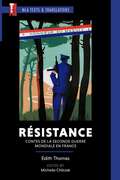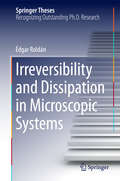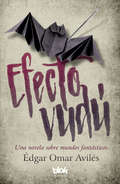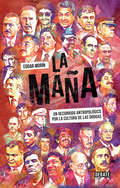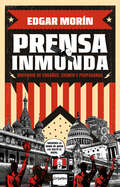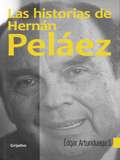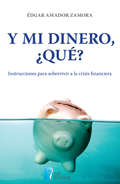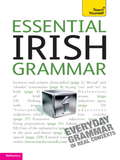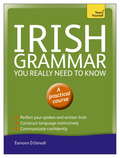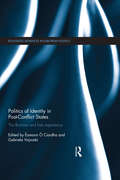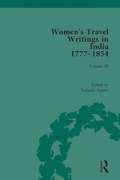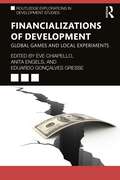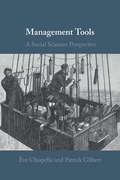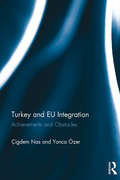- Table View
- List View
Résistance: Contes de la Seconde Guerre mondiale en France (Texts and Translations #34)
by Édith ThomasBased on real events of the French Resistance during World War II, Édith Thomas's stories explore how ordinary people respond to the extraordinary conditions of political occupation. The stories, first published under the title Contes d'Auxois by an underground press in 1943, were written to oppose Vichy-Nazi propaganda and to offer encouragement to civilians who felt resigned to defeat.Whether lining up to wait for food, tuning in to a forbidden radio broadcast, adapting to living side by side with German soldiers, or preparing for an act of sabotage, the characters in these stories must make choices in highly compromised circumstances on a daily basis. As the characters confront their own suffering and that of others, their actions inspire readers to consider the nature of heroism, the idea that people can share a common humanity with their enemies, and the possibility for individuals to find solidarity in an overwhelming, isolating world.
Irreversibility and Dissipation in Microscopic Systems
by Édgar RoldánAfter an insightful introductory part on recent developments in the thermodynamics of small systems, the author presents his contribution to a long-standing problem, namely the connection between irreversibility and dissipation. He develops a method based on recent results on fluctuation theorems that is able to estimate dissipation using only information acquired in a single, sufficiently long, trajectory of a stationary nonequilibrium process. This part ends with a remarkable application of the method to the analysis of biological data, in this case, the fluctuations of a hair bundle. The third part studies the energetics of systems that undergo symmetry breaking transitions. These theoretical ideas lead to, among other things, an experimental realization of a Szilard engine using manipulated colloids. This work has the potential for important applications ranging from the analysis of biological media to the design of novel artificial nano-machines.
Efecto vudú
by Édgar Omar AvilésUna novela sobre mundos fantásticos. ¿Te atreverías a modificar el pasado para evitar un error? Madamme Garcell, madre de Ychi, ha convertido accidentalmente a su hijo en un zombi, y está dispuesta a realizar los hechizos que sean necesarios para impedir su tragedia. En estas páginas repletas de magia, Ychi emprende una travesía con seres de origami y otros singulares personajes."
Crímenes de cuello blanco: El capitalismo de amigotes y las redes en la mafia del poder
by Édgar MorinLa mafia del poder sigue viva... y lucrando. Este es un libro sobre delitos cometidos por ciudadanos respetados, pero no respetables. Delitos que evidencian la existencia de pactos políticos y de impunidad a gran escala. Este es un libro sobre los crímenes de cuello blanco. Hoy, de hecho, la política y la alta empresa mexicana no se entienden sin este "capitalismo de amigotes", basado en favores, lazos de sangre, desigualdades y protección gubernamental. Y el daño financiero de esos crímenes es mucho más grande que el de toda la delincuencia "clásica". En esta obra, con nombres y apellidos, se muestra quiénes integran esas redes de privilegio, en qué negocios están metidos y qué historias arrastran. ¿Lo más impresionante? Que esa "mafia del poder" sigue operando, y algunos de sus integrantes tratan de incorporarse a las actuales esferas gubernamentales.
La maña
by Édgar MorinUn libro que, sustentado por una rigurosa investigación, aborda de forma accesible y creativa el tema de las drogas ilícitas y el narcotráfico.Del senador corrupto al mando militar que deja pasar los cargamentos. Del discreto capo de clase mundial y el empresario que lava dinero al policía judicial que cobra derecho de piso. Del dealer del barrio al consumidor de mota que busca su toque en las calles. Todos forman parte de la maña.La maña examina a profundidad el nudo social que conforman las drogas ilícitas, el dinero, la violencia y el poder. A partir de las mejores herramientas de la antropología, la sociología y el periodismo, Edgar Morín nos ofrece una impresionante visión de conjunto del narcotráfico en tiempos de un capitalismo cada vez más multifacético y depredador.El objetivo es poner al descubierto el corazón de la maña: una cultura delincuencial que surgió en menos de 100 años de prohibición e hizo de la corrupción un sistema prácticamente inamovible. Es una trama que detalla el proceso por el que las drogas se convirtieron en mercancías y produjeron una subcultura con un sistema propio de creencias y símbolos. Asimismo, se configura un conjunto de datos duros que contribuyen a demostrar el costoso fracaso de la versión mexicana de la guerra contra las drogas, resultado de decisiones improvisadas e influidas incluso por la ficción cinematográfica.
Prensa Inmunda: Brevario de engaños, crimen y propaganda
by Édgar MorinEn estas páginas se asoman las profundas divisiones dentro del gremio periodístico, la servidumbre voluntaria, el espionaje o la vigilancia a la que ha sido sometido, su precariedad laboral y no pocas dificultades o conflictos para obtener información. Prensa inmunda es también un repaso por la compleja historia de la prensa mexicana, desde aquellos años de control total de la información hasta nuestros días, con una relación tirante como la que AMLO ha establecido con los medios. Engañar, manipular y controlar no es nada nuevo. A lo largo de la historia abundan ejemplos en los que se miente, se provocan emociones, se tergiversan cosas o se incita de modo más o menos sutil a modificar la conducta a través de la persuasión. La prensa no ha estado exenta de esto. Muchos medios han servido más como vehículo de propagación de las verdades de los gobiernos -un conducto de mensajes entre los poderosos-, que comovía de contacto entre los ciudadanos para la conformación de una mejor sociedad. En este atrevido ensayo, el autor nos conduce por el intrincado y muchas veces inmundo camino de la prensa, de los grandes medios y sus cotos de poder. A través de 13 capítulos nos entrega una suerte de manual con pistas para descifrar distintos trucos o mañas del poder político, económico, criminal y mediático que han complicado el que hacer de los periodistas.
Las historias de Hernán Peláez
by Édgar ArtunduagaPeriodista deportivo y director del programa radial más escuchado en elpaís, Hernán Peláez se ha convertido en una de las voces más queridas enel país. Su amigo y por muchos años compañero radial, Édgar Artunduaga,hace la más completa biografía no solo del periodista sino del serhumano. Dignidad y entereza son las palabras que mejor definen a una personacomo Hernán Peláez Restrepo. Y es que en los casi cincuenta años que leha dedicado a su profesión de periodista, eso justamente ha demostradoser el doctor Peláez, como lo llaman sus compañeros de trabajo y suscolegas, un hombre digno e íntegro. Y, quizá por eso (bueno, habría quesumar también una tenacidad a toda prueba y dosis sobrehumanas decumplimiento), se ha convertido en una leyenda de los medios decomunicación, querido y respetado como pocos.El periodista Édgar Artunduaga -echando mano de la prodigiosa memoriadel protagonista de estas páginas, tanto como de sus propios recuerdos einvestigaciones, así como de varios testimonios de amigos y colegas- haconseguido reunir una fantástica colección de historias, anécdotas,experiencias y recuerdos de la vida y los trabajos de Hernán PeláezRestrepo.En palabras de Juan Gossaín, [...] Después de tanto tiempo dedicado sindescanso ni pausa a esa actividad [el periodismo], generalmentesalpicada de desencantos, Peláez puede mirar hacia atrás y sentir en elalma la tranquilizadora sensación del deber cumplido y del trabajo bienhecho. Desde el más humilde de los colombianos hasta el periodista másencopetado sienten por el doctor Peláez un afecto personal y una enormeconsideración profesional. Hernán es ya un miembro de nuestra familia.
Y mi dinero, ¿Qué?: Instrucciones para sobrevivir a la crisis financiera
by Édgar Amador ZamoraEsta crisis económica tiene mal a todo mundo: el dinero no alcanza para nada y, sin importar cuántos billetes lleguen a las manos de la gente, siempre faltan. El origen de este desastre, a todas luces cotidiano para el ciudadano de a pie, está en una serie de decisiones tomadas en los bancos y en las empresas que manejan cifras enormes; a ese ciudadano de a pie, sin embargo, le interesa mucho más saber qué va a pasar ahora con su dinero. Para eso está este libro. Sin pelos en la lengua, Y mi dinero ¿Qué? habla de asuntos económicos con sencillez y humor (para que no asusten); también pone ejemplos divertidos de lo que pasa cuando se toman malas decisiones y de lo que puede pasar cuando estas decisiones son buenas, aun si las toma la persona más común.
Essential Irish Grammar: Teach Yourself
by Éamonn Ó'DónaillEssential Irish Grammar will help you get more out of your study of Irish. Essential Irish Grammar is an up-to-date introduction to Irish grammar. You don't need to know a lot about grammar before you start. Everything is explained simply and there are lots of examples to illustrate each point. Unlike more traditional grammars, Essential Irish Grammar is structured so that you can look up language forms according to what you want to say, even if you don't know the grammatical term for them. If you already know some grammar, then you can use the 'reference grammar' section at the back of the book to look up the points you need.The course consists of 20 units illustrating the various uses to which the language can be put, for example, giving instructions or talking about the recent past. The more traditional reference grammar deals with grammatical structures, such as the imperative or the perfect tense. All grammatical terms are explained in the glossary at the back of the book. Each unit contains exercises for you to practise what you have learnt and there is a key at the back of the book for you to check your answers. The new page design in this edition means that the book is even easier to use and the main headings are in English so that you can find your way around the book quickly. This edition contains a 'taking it further' section which will direct you to further sources of real Irish. Essential Irish Grammar will help you to understand and manipulate Irish grammar with confidence because:- you need no prior knowledge of grammatical terminology to use it;- the approach is accessible and supportive;- the examples are clear and in context;- exercises help you practise every point.Now in a brand new edition with new, easy-to-follow page design and interactive on-line features:NOT GOT MUCH TIME?One, five and ten-minute introductions to key principles to get you started.AUTHOR INSIGHTSLots of instant help with common problems and quick tips for success, based on the author's many years of experience.USEFUL VOCABULARYEasy to find and learn, to build a solid foundation for speaking.END-OF-UNIT SUMMARIES AND ONLINE TESTSSummaries and tests to help you keep track of your progress.EXTEND YOUR KNOWLEDGEExtra online articles at: www.teachyourself.com to give you a richer understanding of the culture and history of Irish.
Irish Grammar You Really Need to Know: Teach Yourself
by Éamonn Ó'DónaillComprehensive and clear explanations of key grammar patterns and structures are reinforced and contextualized through authentic materials. You will not only learn how to construct grammar correctly, but when and where to use it so you sound natural and appropriate. Irish Grammar You Really Need to Know will help you gain the intuition you need to become a confident communicator in your new language.
Essential Irish Grammar: Teach Yourself
by Éamonn Ó DónaillEssential Irish Grammar will help you get more out of your study of Irish. Essential Irish Grammar is an up-to-date introduction to Irish grammar. You don't need to know a lot about grammar before you start. Everything is explained simply and there are lots of examples to illustrate each point. Unlike more traditional grammars, Essential Irish Grammar is structured so that you can look up language forms according to what you want to say, even if you don't know the grammatical term for them. If you already know some grammar, then you can use the 'reference grammar' section at the back of the book to look up the points you need.The course consists of 20 units illustrating the various uses to which the language can be put, for example, giving instructions or talking about the recent past. The more traditional reference grammar deals with grammatical structures, such as the imperative or the perfect tense. All grammatical terms are explained in the glossary at the back of the book. Each unit contains exercises for you to practise what you have learnt and there is a key at the back of the book for you to check your answers. The new page design in this edition means that the book is even easier to use and the main headings are in English so that you can find your way around the book quickly. This edition contains a 'taking it further' section which will direct you to further sources of real Irish. Essential Irish Grammar will help you to understand and manipulate Irish grammar with confidence because:- you need no prior knowledge of grammatical terminology to use it;- the approach is accessible and supportive;- the examples are clear and in context;- exercises help you practise every point.Now in a brand new edition with new, easy-to-follow page design and interactive on-line features:NOT GOT MUCH TIME?One, five and ten-minute introductions to key principles to get you started.AUTHOR INSIGHTSLots of instant help with common problems and quick tips for success, based on the author's many years of experience.USEFUL VOCABULARYEasy to find and learn, to build a solid foundation for speaking.END-OF-UNIT SUMMARIES AND ONLINE TESTSSummaries and tests to help you keep track of your progress.EXTEND YOUR KNOWLEDGEExtra online articles at: www.teachyourself.com to give you a richer understanding of the culture and history of Irish.
Irish Grammar You Really Need to Know: Teach Yourself
by Éamonn Ó DónaillComprehensive and clear explanations of key grammar patterns and structures are reinforced and contextualized through authentic materials. You will not only learn how to construct grammar correctly, but when and where to use it so you sound natural and appropriate. Irish Grammar You Really Need to Know will help you gain the intuition you need to become a confident communicator in your new language.
Politics of Identity in Post-Conflict States: The Bosnian and Irish experience (Routledge Advances in European Politics)
by Éamonn Ó Ciardha Gabriela VojvodaIreland and the Balkans have come to represent divided and (re)united communities. They both provide effective microcosms of national, ethnic, political, military, religious, ideological and cultural conflicts in their respective regions and, as a result, they demonstrate real and imaginary divisions. This book will specifically focus on the history, politics and literature of Bosnia-Herzegovina and Northern Ireland, while making comparative reference to some of Europe’s other disputed and divided regions. Using case-studies such as Kosovo and Serbia; Lithuania, Germany, Poland, Russia and Belarus; Greece and Macedonia, it examines ‘space’, ‘place’ and ‘border’ discourse, the topography of war and violence, post-war settlement and reconciliation, and the location and negotiation of national, ethnic, religious, political and cultural identities. The book will be of particular interest to scholars and students of cultural studies, history, politics, Irish studies, Slavonic studies, area studies and literary studies.
Roma Felix – Formation and Reflections of Medieval Rome (Church, Faith and Culture in the Medieval West)
by Éamonn Ó Carragáin Carol Neuman de VegvarAfter the Roman empire fell, medieval Europe continued to be fascinated by Rome itself, the 'chief of cities'. Once the hub of empire, in the early medieval period Rome became an important centre for western Christianity, first of all as the place where Peter, Paul and many other important early Christian saints were martyred: their deaths for the Christian faith gave the city the appellation 'Roma Felix', 'Happy Rome'. But in Rome the history of the faith, embodied in the shrines of the martyrs, coexisted with the living centre of the western Latin church. Because Peter had been recognised by Christ as chief among the apostles and was understood to have been the first bishop of Rome, his successors were acknowledged as patriarchs of the West and Rome became the focal point around which the western Latin church came to be organised. This book explores ways in which Rome itself was preserved, envisioned, and transformed by its residents, and also by the many pilgrims who flocked to the shrines of the martyrs. It considers how northern European cultures (in particular, the Irish and English) imagined and imitated the city as they understood it. The fourteen articles presented here range from the fourth to the twelfth century and span the fields of history, art history, urban topography, liturgical studies and numismatics. They provide an introduction to current thinking about the ways in which medieval people responded to the material remains of Rome's classical and early Christian past, and to the associations of centrality, spirituality, and authority which the city of Rome embodied for the earlier Middle Ages. Acknowledgements for grants in aid of publication are due to the Publication Fund of the College of Arts, Humanities, Celtic Studies and Social Sciences at University College Cork; to the Publication Fund of the National University of Ireland, Dublin; and to the Office of the Provost, Ohio Wesleyan University.
Imperial Women Writers in Victorian India
by Éadaoin AgnewThis book is about Victorian women's representations of colonial life in India. These accounts contributed to imperial rule by exemplifying an idealized middle-class femininity and attesting to the Anglicisation of the subcontinent. Writers described familiarly feminine modes of experience, focusing on the domestic environment, household management, the family, hobbies and pastimes, romance and courtship and their busy social lives. However, this book reveals the extent to which their lives in India bore little resemblance to their lives in Britain and suggests that the acclaimed transportation of the home culture was largely an ideological construct iterated by women writers in the service of the Raj. In this way, they subverted the constraints of Victorian gender discourses and were part of a growing proto-feminism.
Women's Travel Writings in India 1777–1854: Volume III: Mrs A. Deane, A Tour through the Upper Provinces of Hindustan (1823); and Julia Charlotte Maitland, Letters from Madras During the Years 1836-39, by a Lady (1843) (Chawton House Library: Women’s Travel Writings)
by Éadaoin AgnewThe ‘memsahibs’ of the British Raj in India are well-known figures today, frequently depicted in fiction, TV and film. In recent years, they have also become the focus of extensive scholarship. Less familiar to both academics and the general public, however, are the eighteenth- and early nineteenth-century precursors to the memsahibs of the Victorian and Edwardian era. Yet British women also visited and resided in India in this earlier period, witnessing first-hand the tumultuous, expansionist decades in which the East India Company established British control over the subcontinent. Some of these travellers produced highly regarded accounts of their experiences, thereby inaugurating a rich tradition of women’s travel writing about India. In the process, they not only reported events and developments in the subcontinent, they also contributed to them, helping to shape opinion and policy on issues such as colonial rule, religion, and social reform. This new set in the Chawton House Library Women’s Travel Writing series assembles seven of these accounts, six by British authors (Jemima Kindersley, Maria Graham, Eliza Fay, Ann Deane, Julia Maitland and Mary Sherwood) and one by an American (Harriet Newell). Their narratives – here reproduced for the first time in reset scholarly editions – were published between 1777 and 1854, and recount journeys undertaken in India, or periods of residence there, between the 1760s and the 1830s. Collectively they showcase the range of women’s interests and activities in India, and also the variety of narrative forms, voices and personae available to them as travel writers. Some stand squarely in the tradition of Enlightenment ethnography; others show the growing influence of Evangelical beliefs. But all disrupt any lingering stereotypes about women’s passivity, reticence and lack of public agency in this period, when colonial women were not yet as sequestered and debarred from cross-cultural contact as they would later be during the Raj. Their narratives are consequently a useful resource to students and researchers across multiple fields and disciplines, including women’s writing, travel writing, colonial and postcolonial studies, the history of women’s educational and missionary work, and Romantic-era and nineteenth-century literature. This volume includes two texts, Ann Deane, A Tour Through the Upper Provinces of Hindostan (1823) and Julia Maitland, Letters from Madras (1846).
Sleep and You: Sleep Better, Live Better
by Barbara Sandilands Diane B. Boivin Ève Van CauterAn easy and readable guide to the latest scientific information on how and why to sleep better and improve your wellbeing. Why do we need to sleep? For those of who pass nights staring at the ceiling, the question is beside the point. In fact, we are all sleeping less, and worse, than ever. Despite this, we know that losing sleep or sleeping fitfully has consequences for our health and well being. What can we do when sleep just won’t come? In nine fascinating chapters, Dr. Diane B. Boivin lays out exactly why sleeping well is essential to good health. She explains, in a clear and accessible way, the phenomena associated with sleep: our individual sleep needs; circadian rhythms and problems linked to our biological clocks; the links between insomnia, stress, and obesity; why those suffering from anxiety or depression can have trouble sleeping; snoring; sleep apnea; night terrors; and dreams, among others. Special attention is given to sleep disturbances affecting night workers and new mothers. An abundantly illustrated, practical guide for everyone trying to reclaim their sleep.
Financializations of Development: Global Games and Local Experiments (Routledge Explorations in Development Studies)
by Ève Chiapello Anita Engels Eduardo Gonçalves GresseFinancializations of Development brings together cutting-edge perspectives on socio-political, socio-historical and institutional analyses of the evolving multiple and intertwined financialization processes of developmental institutions, programs and policies. In recent years, the development landscape has seen a radical transformation in the partaking actors, which have moved beyond just multilateral or bilateral public development banks and aid agencies. The issue of financing for sustainable development is now at the top of the agenda for multilateral development actors. Increasingly, development institutions aim to include private actors and to lever in private money to support development projects. Drawing on case studies conducted in Africa, Asia, Europe and Latin America, this book examines the ways in which these private finance actors are enrolled and associated with the conception and implementation of development policies. Beginning with a focus on global actors and private foundations, this book considers the ways in which development funding is raised, managed and distributed, as well as debates at the center of global forums where financialized policies and solutions for development are conceived or discussed. The book assembles empirical research on development programs and demonstrates the social consequences of the financializations of development to the people on the ground. Highlighting the plurality of processes and outcomes of modern-day relations, tools, actors and practices in financing development around the world, this book is key reading for advanced students, researchers and practitioners in all areas of finance, development and sustainability.
Management Tools: A Social Sciences Perspective
by Patrick Gilbert Ève ChiapelloNo organization is immune from the influence of management tools. Such tools as norms, indicators, ranking, evaluation grids and management control systems have moved outside the managerial and consultancy realm within which they were first developed to reach public administrations and policy-makers, as well as a range of other governmental and non-governmental organizations. Taking management tools out of the practical and utilitarian contexts to which they are often consigned and approaching them from a social analytical perspective, this book gives primacy to these everyday objects that constitute the background of organizational life and remain too often unquestioned. Bringing together developing streams of research from anthropology, political science, social psychology, sociology, accounting, organisation theory and management, Ève Chiapello and Patrick Gilbert offer an unprecedented theoretical synthesis that will help managers, scholars and policy-makers to unpack the functional and dysfunctional roles and effects of management tools within and across organizations.
Giant Cocktails: Party Drinks, Punch Bowls, and Other Beverages to Share—25 Delicious Recipes Perfect for Groups
by Èmilie LaraisonBatched cocktails perfect for parties and groups! Within this book of delicious recipes, you will find tons of cocktails to share and batch in large quantities for festive and convivial evenings, including: Strawberry DaiquiriBubbly Champagne PunchPiña ColadaCosmoMoscow MuleDaquiriCuba LibreGin and TonicBloody MaryBelliniMai TaiSex on the BeachPassionfruit MojitoBlue LemonadeSangriaAnd More! Stylish, revisited and always inspired, simple or more sophisticated, giant cocktails are ideal for special occasions. Serve them in a salad bowl, pitcher, or a jar, the preparations proposed in this book lend themselves perfectly to the large format. This book includes so many recipes that are sure to please your guests and make your event or gathering a success!
Tensions Between Capitalism and Democracy Today From the Perspective of J. S. Mill and J. A. Schumpeter
by Çınla Akdere Gülenay Baş DinarThis book examines the intellectual ideas that underpin our understanding of capitalism. Framing these debates through the work on John Stuart Mill and Joseph Schumpeter, the development of democracy and its relationship with capitalism is explored to provide insight into the rationality of individuals and the distribution of power. By analysing the evolution of economic systems, ideas relating to democracy, capitalism, liberalism, competition, and elites are also defined.This book aims to inform current economic and political debates and to highlight new forms of democracy and capitalism. It will be relevant to students and researchers interested in the political economy and the history of economic thought.
Changing Nature of North-South Linkages: Stylized Facts and Explanations
by M. Ayhan Kose Çiğdem AkınA report from the International Monetary Fund.
Antikurdischer Rassismus im Fokus: Beiträge zur Rassismusforschung in der deutschen Migrationsgesellschaft
by Çinur Ghaderi Esther AlmstadtÇinur Ghaderi und Esther Almstadt machen in diesem Band Diskriminierungs- und Rassismuserfahrungen von Kurd*innen in der Migrationsgesellschaft sichtbar und vermitteln Wissen zu Kurd*innen in Deutschland. Sie richten damit den Fokus auf eine Leerstelle in der ohnehin noch jungen Rassismusforschung in Deutschland. Ihre Forschungsergebnisse beruhen vor allem auf qualitativen Interviews mit Akteur*innen aus unterschiedlichen gesellschaftlichen Bereichen und einer Medienanalyse zur Darstellung von Kurd*innen, die in einen Definitionsvorschlag für Antikurdischen Rassismus münden und bildungspolitische Handlungsperspektiven eröffnen. Zielgruppen sind Studierende, Forschende, Lehrende, Praktiker*innen unterschiedlicher sozialwissenschaftlicher Disziplinen und Interessierte aus Politik und Gesellschaft, die sich über Kurd*innen in Deutschland und ihre Diskriminierungs- und Rassismuserfahrungen informieren möchten und hieraus Handlungsperspektiven entwickeln möchten.
Turkey and EU Integration: Achievements and Obstacles
by Çigdem Nas Yonca ÖzerWhat has been achieved regarding Turkey’s efforts at integration to the EU and what obstacles remain to it achieving full membership? Like other developing countries, Turkey displays visible signs of advancement with rapid increases in living standards, greater mobility and the rapid spread of technology. Much of its legislation and political, economic and administrative systems are also now aligned to the EU and this process has undoubtedly contributed to democratization and modernization. At the same time problems in politics and society persist; the Gezi protests, limitations of freedom of expression, frequent occupational accidents in the mining and construction sectors, honour killings and political upheaval which has manifested itself most starkly with the recent coup attempt all call attention to the challenges facing a country in the process of change. Charting the political, legal and economic relations between Turkey and the European Union since 1959 this book explores the relationship through phases such as association, customs union and candidacy. Each chapter covers a particular period in the relations and/or a theme which has both current and overall relevance to the conduct of the relations. In this way, the authors examine the impact of the EU in affecting change, what has been achieved and the obstacles that remain.
Music by My Bedside
by Çigdem Aksoy Fromm Kürsat BasarOn the eve of a coup d'etat, the wife of a diplomat newly returned to Turkey from the United States finds that the new Minister of Foreign Affairs, Fuat, is in fact a childhood friend. Having married more for status than love, and quizzically unmoored from the reality of day-to-day existence in the capital, she begins to nurse an impossible love for her husband's superior, and in the process of telling us of her Bovary-like, novelistic infatuation, she confesses innumerable details of her life: her tomboyish school years, her independence and ambitions as a young woman, her surprise at her own willingness to set aside her aspirations to enter the comfortable world represented by her husband. Set against the backdrop of the great cultural changes occurring in Turkey during the 1960s, Music by My Bedside is a compelling and often playful journey through one woman's off-kilter view of herself, the world, and the conventions by which she is constrained.
